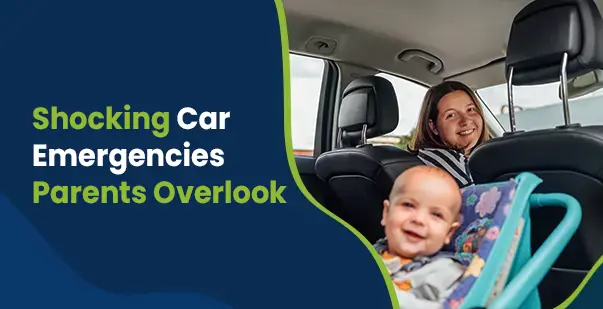Table Of Contents:
- Introduction
- Why Children Are at a Higher Risk in Cars
- Best Practices for Child Passenger Safety
- Types of Emergencies: What Can Go Wrong?
- Prevention Strategies: How Parents Can Reduce Risks
- Safety First: Last Words on Kids in Cars
Every car ride with your child is a chance to make memories, but it also comes with an opportunity to be prepared. Even a short trip can bring small, unexpected moments like a sudden cough, a scraped knee, or a spilled snack. When you know how to respond calmly, you can easily turn those surprises into situations you handle with care.
That’s why it’s important to know how to handle pediatric emergencies in cars. Child Passenger Safety Week (September 21-27, 2025) is a good time to go beyond just securing the seatbelt. You should also be ready for situations like choking, allergic reactions, or heatstroke. The right steps, taken quickly, can make a big difference in how your child recovers.
In this guide, you’ll learn the key steps every parent should know. That way, no matter how short or long the trip, you’ll be ready to protect your kids safety in the car.
Why Children Are at a Higher Risk in Cars
Vehicle-related incidents are a major cause of injury and death in children. In 2023 alone, 29 children in the U.S. died from pediatric heatstroke in a car. Hundreds more were injured in non-crash events like getting trapped inside or accidentally activating vehicle controls.
Children are more at risk than adults because their bodies heat up faster, their airways block more easily, and they can’t always tell you when they’re in trouble. That’s why you need to know how to prevent these situations and how to act quickly if they happen.
Best Practices for Child Passenger Safety
Car crashes remain a leading cause of injury for children, yet many parents move them to the next seat stage too soon. Knowing when and why to make each transition can greatly reduce injury risk. Here’s a clear breakdown of what to do at every stage, and the science that backs it up:
Rear-Facing for as Long as Possible
Keep your child in a rear-facing seat until they hit the maximum height or weight allowed by the manufacturer: Not just until age two. The American Academy of Pediatrics updated this guidance in 2018 to remove a strict age limit.
Here’s why: A child’s head makes up about 25% of their body weight, compared to 6% in adults. This means their neck and spine are more vulnerable in a crash. A rear-facing seat spreads crash forces across the back, lowering the risk of neck and spinal injuries. A 2023 research shows rear-facing seats cut the odds of injury by 14% and provide better protection in side-impact and frontal crashes.
Forward-Facing with a Harness (When They’re Ready)
Once your child outgrows the rear-facing limits, switch to a forward-facing seat with a harness and top tether. Keep using this until they reach the seat’s height or weight limits. The harness keeps them restrained, while the tether reduces head movement during a crash.
Booster Seats Until the Seat Belt Fits Right
After your child outgrows the forward-facing seat, move them to a booster seat until a regular seat belt fits correctly. According to the CDC (Centers for Disease Control and Prevention) that means:
- The lap belt lies across the upper thighs, not the stomach.
- The shoulder belt rests snugly across the chest, not the neck or face.
Back Seat, Always
Kids under 13 should always ride in the back. This cuts the risk of fatal injury by up to 75% for children under 3, and nearly 50% for ages 4–8.
Why These Guidelines Matter
Anatomy: A child’s head is larger in proportion to their body, and their neck muscles are not yet strong. This makes forward-facing positions more dangerous during sudden stops. Rear-facing seats help absorb and spread these forces, keeping your child safer.
Proper Fit: Misuse is common; About 46% of car seats are installed or used incorrectly, and misuse rates for forward-facing seats are even higher at 61%. Taking time to install the seat correctly and follow guidelines makes a life-saving difference.
Types of Emergencies: What Can Go Wrong?
When on the road, several pediatric emergencies can happen in the car without warning. Some in seconds, others over minutes. Knowing these risks means you can act fast and give the right help before medical professionals arrive:
Crash Injuries
A collision can cause blunt force trauma, spinal injuries, or harm from airbag deployment, especially if a child is in the front seat. Even low-speed crashes can lead to hidden internal injuries.
What to do:
- Keep your child still. Avoid moving their neck or spine unless there’s an immediate threat.
- Check if they are breathing, bleeding, or responsive.
- If the child is unresponsive and not breathing normally, begin cardiopulmonary resuscitation (CPR) following Pediatric Advanced Life Support (PALS) guidelines while someone calls emergency services.
Non-Crash Emergencies
Some of the most dangerous pediatric emergencies in cars have nothing to do with a crash. Heat buildup, choking, or getting stuck in restraints can all turn serious fast. Here’s what you need to watch for and how to respond:
Heatstroke / Being Left in a Vehicle
Inside a closed car, the temperature can rise by 20°F in just 10 minutes, even with the windows slightly open. Heatstroke can be deadly once body temperature passes 104°F. If they lose consciousness and stop breathing, pediatric CPR skills can make the difference before paramedics arrive.
Parent action:
- Remove your child from the car immediately.
- Move them to a shaded or cool area.
- Begin active cooling. Use wet cloths or fan them while calling emergency services.
Choking
Snacks, toys, or small objects can block a child’s airway. It’s harder to assist quickly when they’re strapped in a car seat.
Parent action:
- If you’re trained, give back blows and chest thrusts for infants, or abdominal thrusts for older children.
- If you’re not trained, call 911 and follow the dispatcher’s instructions.
Entrapment
Seatbelt malfunctions or a limb or head caught in a window or door can cause injury or cut off circulation.
Parent action:
- Stay calm and try to release the mechanism.
- If that doesn’t work, cut the belt with a safety cutter.
- If circulation is blocked, get urgent medical evaluation, even if your child looks fine.
Prevention Strategies: How Parents Can Reduce Risks
Most child emergencies in vehicles can be avoided if you follow consistent safety habits. The key is to make these checks part of your everyday routine. Whether you’re driving across town or just moving the car in your driveway. Here are a few car safety tips for parents:
1. Pre-Trip Safety Checklist
Before you start the engine, make sure your child’s car seat is correctly installed and adjusted to their size. Remove any loose objects that could fly forward if you stop suddenly. Check the temperature inside the car, as it can rise to a dangerous level in minutes, even with the windows slightly open. Finally, test that all doors and windows open and close smoothly in case you need to get out quickly.
2. Supervision and Safe Parking Habits
Many incidents happen before the trip even begins, often in driveways, parking lots, or stationary cars. Always keep your children within sight when they are near a vehicle, even if you’re just unloading groceries. Lock the car whenever it’s parked to prevent children from getting inside unnoticed.
. And make it a habit to check the back seat and floor area every time you leave the car.
3. Teach Children Basic Emergency Skills
Even young children can learn simple actions that may protect them in an emergency. Show them how to unlock the doors and use the horn if they feel unsafe. They should also know what to do if they can’t wake an adult, and how to call emergency services from a mobile phone.
Safety First: Last Words on Kids in Cars
When you’re driving with your child, small safety habits go a long way. Choose the right car seat, keep young passengers in the back, and watch for early signs of non-crash pediatric emergencies in cars, like heat stress or choking. Events like Child Passenger Safety Week are a good reminder to check your setup, update your knowledge, and recommit to safe travel.
If you want to strengthen your response skills, consider taking a Pediatric Advanced Life Support (PALS) course from a reputable organization.







